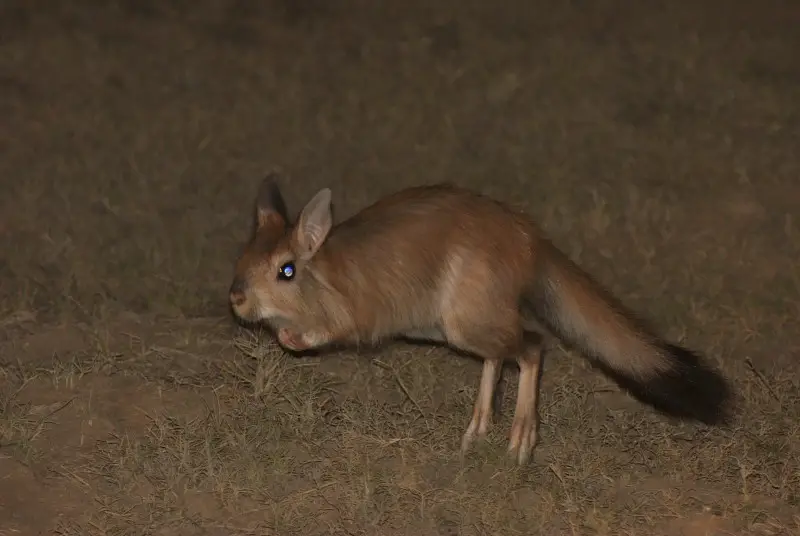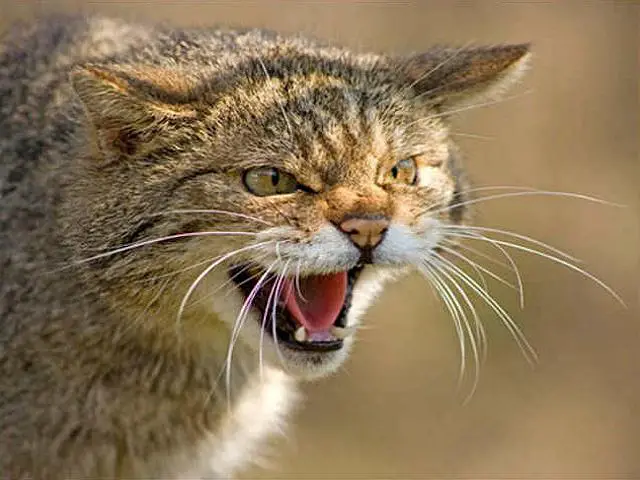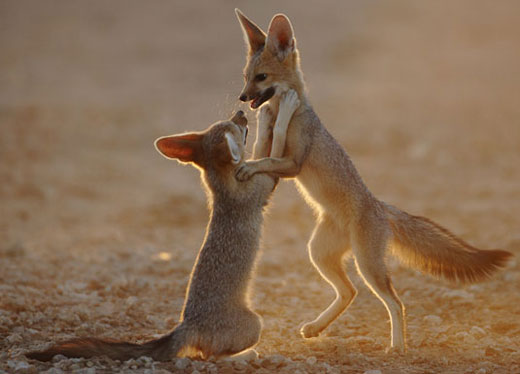Springhare
At first glance it seems that the Springhare is a smaller form of kangaroo, but it’s closer to a rabbit by size. The origins and evolution of these rodents are still a mystery – in the past they were grouped with tjerboas (jumping rodents), later with porcupines porcupines, then with the flying squirrels, but now, at last, they have been allotted their own family.
The Springhare is quite a large rodent, being 35-45 cm long on average, with a tail that’s usually longer than the animal. The most distinctive part of its 3-4 kg heavy body are its massive hind legs that are four times longer than its forelegs. They’re equipped with massive claws for digging and the heavy musculature enables the Springhare to jump even 4 metres away. The colour of this animal varies from dark brown to gray, with a black tip on the tail.
The natural habitat of the Springhare is sandy desert areas, with loose soil in which the rodent could dig burrows. They’re live only in the arid areas of Southern and Eastern Africa. Being a regular prey for jackals, mongooses, snakes and other predators, the Springhares dig burrows to protect themselves. The burrow is around 80 cm deep and it has more than 10 entrances to ensure escape if some animal enters the burrow. These rodents use a wise strategy not to draw attention to their burrow – they use a different entrance every day.
Being nocturnal creatures, the Springhares are active from dusk till dawn. They’re solitary creatures and they live alone, spending their daytime covering in the burrows. In the night, however, they gather in groups of two to six to search for food. The Springhare’s diet consists of grass, various herbs and other vegetation. They can also pester farmers, as they will most often eat anything they find on a farm field.
The Springhare is a mammal that can mate at any time of the year. Each female gives birth every one or two years, where there is one or two infants per litter. In a month’s time, the youngling starts leaving the cave with his mother in search for food. Soon, they start living their own solitary lives and their lifespan can exceed 14 years in total.
Having such a remarkably low birthrate for a rodent that’s widely preyed upon, it’s amazing how they manage to preserve a notable population. The reason for this is the Springhare’s highly advanced senses – their amazing senses of smell, vision and hearing allow them to notice a predator on time. Even if the Springhare is compromised, it still has its legs to carry them away in jumps that can reach even 10 m (30 ft) in length, which is a considerable distance even for the much larger-sized kangaroo.
In Africa, hunting Springhares has been a tradition, as both their fur and meat are used. A dish made of Springhare’s meat is considered to be very tasty and almost every part of the body is eaten. Also, the Springhares are occasionally hunted because of being pests to the farmers. Still, these large rodents are classified as “Least Concern” by the IUCN red list of endangered species and their population is not at risk.





arrgh arrgh arrgh arrgh arrgh
so cuteeeee